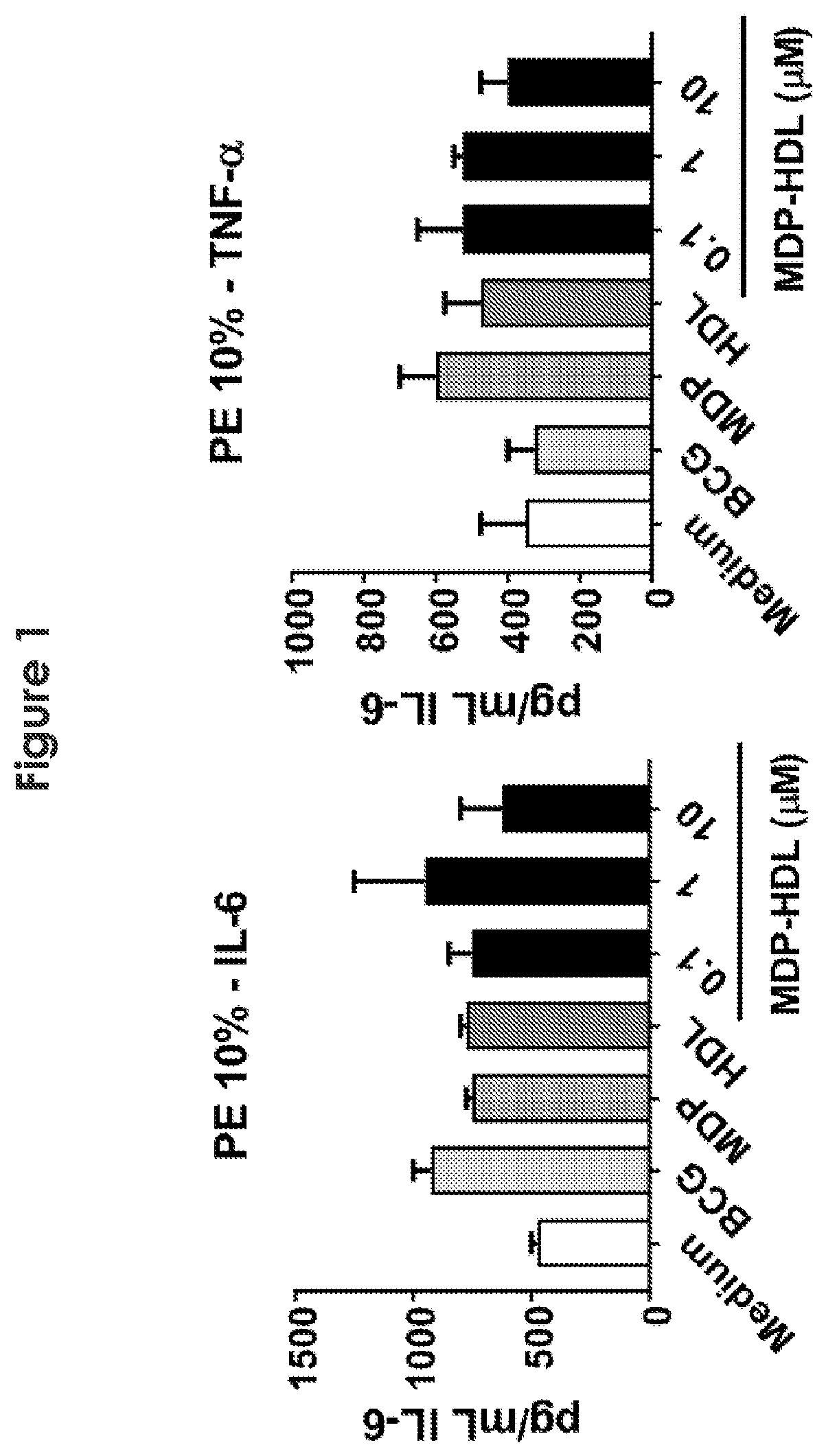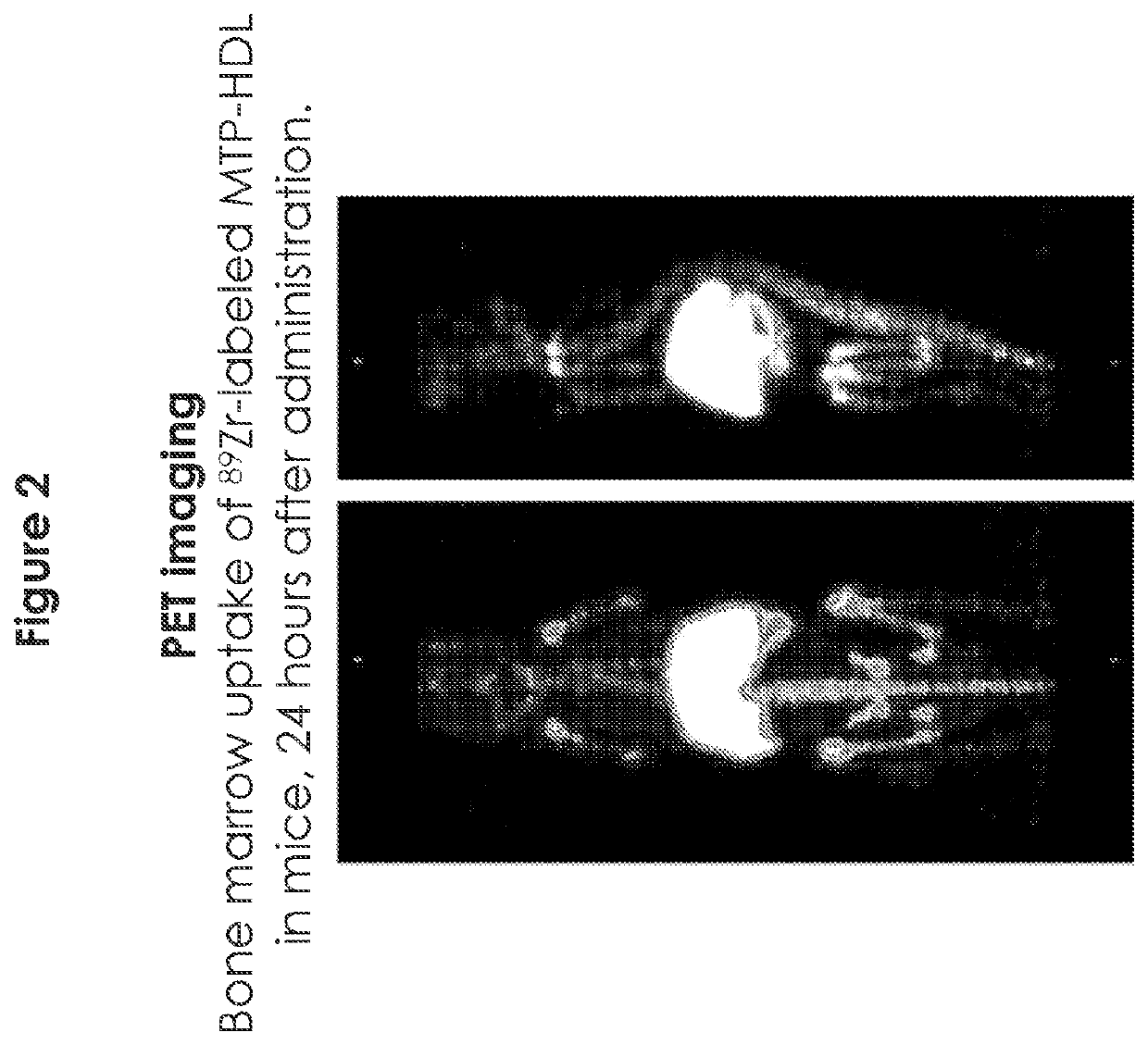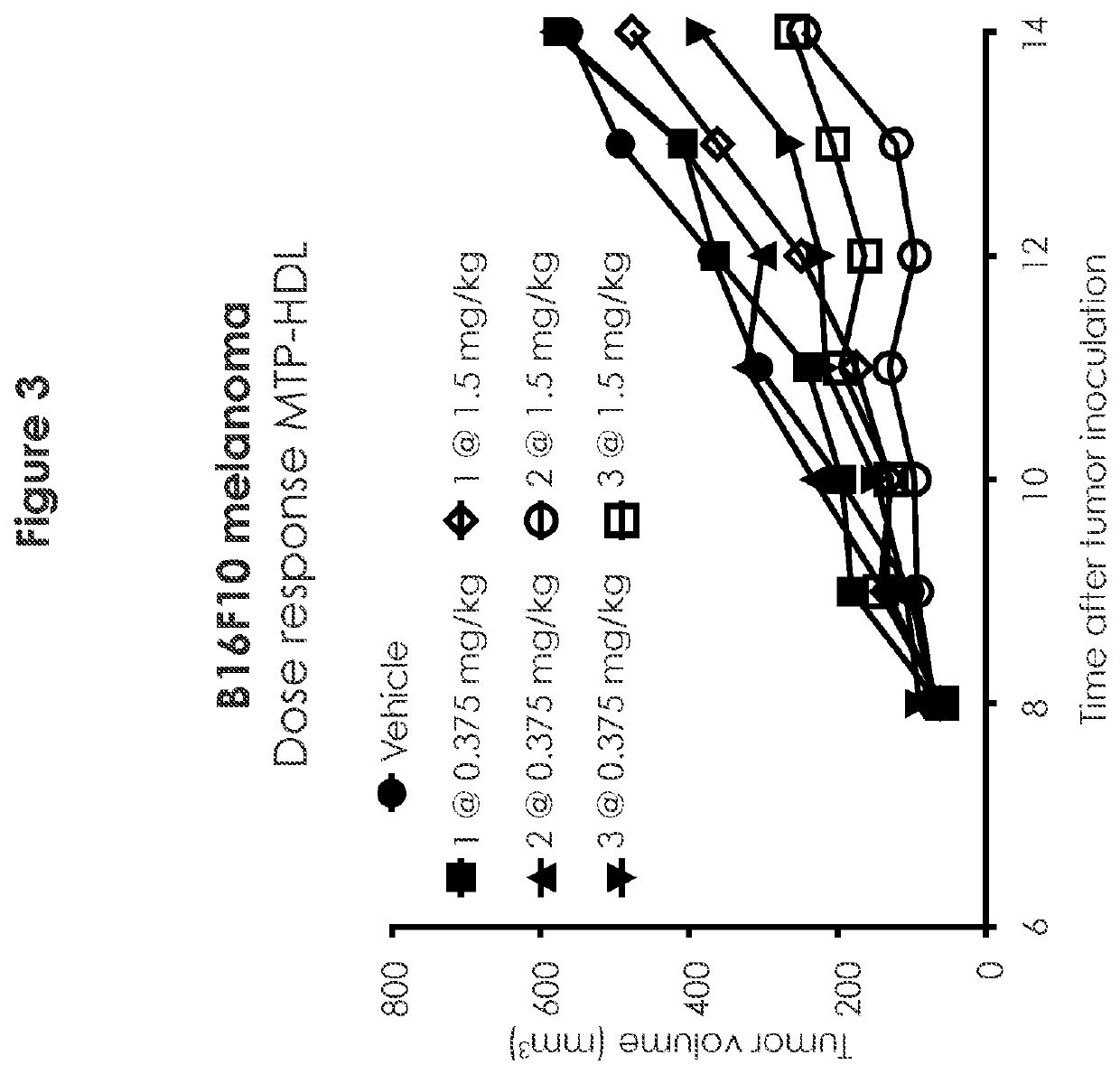Nanobiologic compositions for promoting trained immunity
a technology of nanobiome and composition, applied in the field of nanobiome compositions and methods, can solve the problems of insufficient current treatment for patients with cancer, significant drawbacks in the patient's approach, and surgery may not completely remove neoplastic tissue, so as to promote the hyper-responsive innate immune response and improve the efficacy of checkpoint inhibitor therapy.
- Summary
- Abstract
- Description
- Claims
- Application Information
AI Technical Summary
Benefits of technology
Problems solved by technology
Method used
Image
Examples
example 1
dizer Assembly 1
[0319]This example demonstrates the preparation of a pharmaceutical composition comprising STIMULATOR and the nanoscale assembly in which the STIMULATOR concentration is 4-8 mg / mL in the nanoscale assembly / emulsion and the formulation is made on a 300 mL scale. STIMULATOR (2400 mg) is dissolved in 12 mL of chloroform / t-butanol. The solution is then added into 288 mL of a nanoscale assembly solution (3% w / v) including a mixture of POPC / PHPC phospholipids, apoA-I, tricaprylin, and cholesterol. The mixture is homogenized for 5 minutes at 10,000-15,000 rpm (Vitris homogenizer model Tempest I.Q.) in order to form a crude emulsion, and then transferred into a high pressure homogenizer. The emulsification is performed at 20,000 psi while recycling the emulsion. The resulting system is transferred into a Rotavap, and the solvent is rapidly removed at 40° C. at reduced pressure (25 mm of Hg). The resulting dispersion is translucent. The dispersion is serially filtered through...
example 2
dizer Assembly 2
[0320]This example demonstrates the preparation of a pharmaceutical composition comprising STIMULATOR and the nanoscale assembly in which the STIMULATOR concentration is 4-8 mg / mL in the nanoscale assembly / emulsion and the formulation is made on a 300 mL scale. STIMULATOR (2400 mg) is dissolved in 12 mL of chloroform / t-butanol. The solution is then added into 288 mL of a nanoscale assembly solution (3% w / v) including a mixture of POPC / PHPC phospholipids, a peptide mimetic of apoA-I, a mixture of C16-C20 triglycerides, a mixture of cholesterol and one or more sterol esters, and a hydrophobic polymer. The mixture is homogenized for 5 minutes at 10,000-15,000 rpm (Vitris homogenizer model Tempest I.Q.) in order to form a crude emulsion, and then transferred into a high pressure homogenizer. The emulsification is performed at 20,000 psi while recycling the emulsion. The resulting system is transferred into a Rotavap, and the solvent is rapidly removed at 40° C. at reduce...
example 3
ation of Nanobiologics of Examples 1 and 2
[0321]The nanobiologic is formed as in either of the above examples. The dispersion is further lyophilized (FTS Systems, Dura-Dry μP, Stone Ridge, N.Y.) for 60 hours. The resulting lyophilization cake is easily reconstitutable to the original dispersion by the addition of sterile water or 0.9% (w / v) sterile saline. The particle size after reconstitution is the same as before lyophilization.
PUM
| Property | Measurement | Unit |
|---|---|---|
| diameter | aaaaa | aaaaa |
| size | aaaaa | aaaaa |
| diameter | aaaaa | aaaaa |
Abstract
Description
Claims
Application Information
 Login to View More
Login to View More - R&D
- Intellectual Property
- Life Sciences
- Materials
- Tech Scout
- Unparalleled Data Quality
- Higher Quality Content
- 60% Fewer Hallucinations
Browse by: Latest US Patents, China's latest patents, Technical Efficacy Thesaurus, Application Domain, Technology Topic, Popular Technical Reports.
© 2025 PatSnap. All rights reserved.Legal|Privacy policy|Modern Slavery Act Transparency Statement|Sitemap|About US| Contact US: help@patsnap.com



